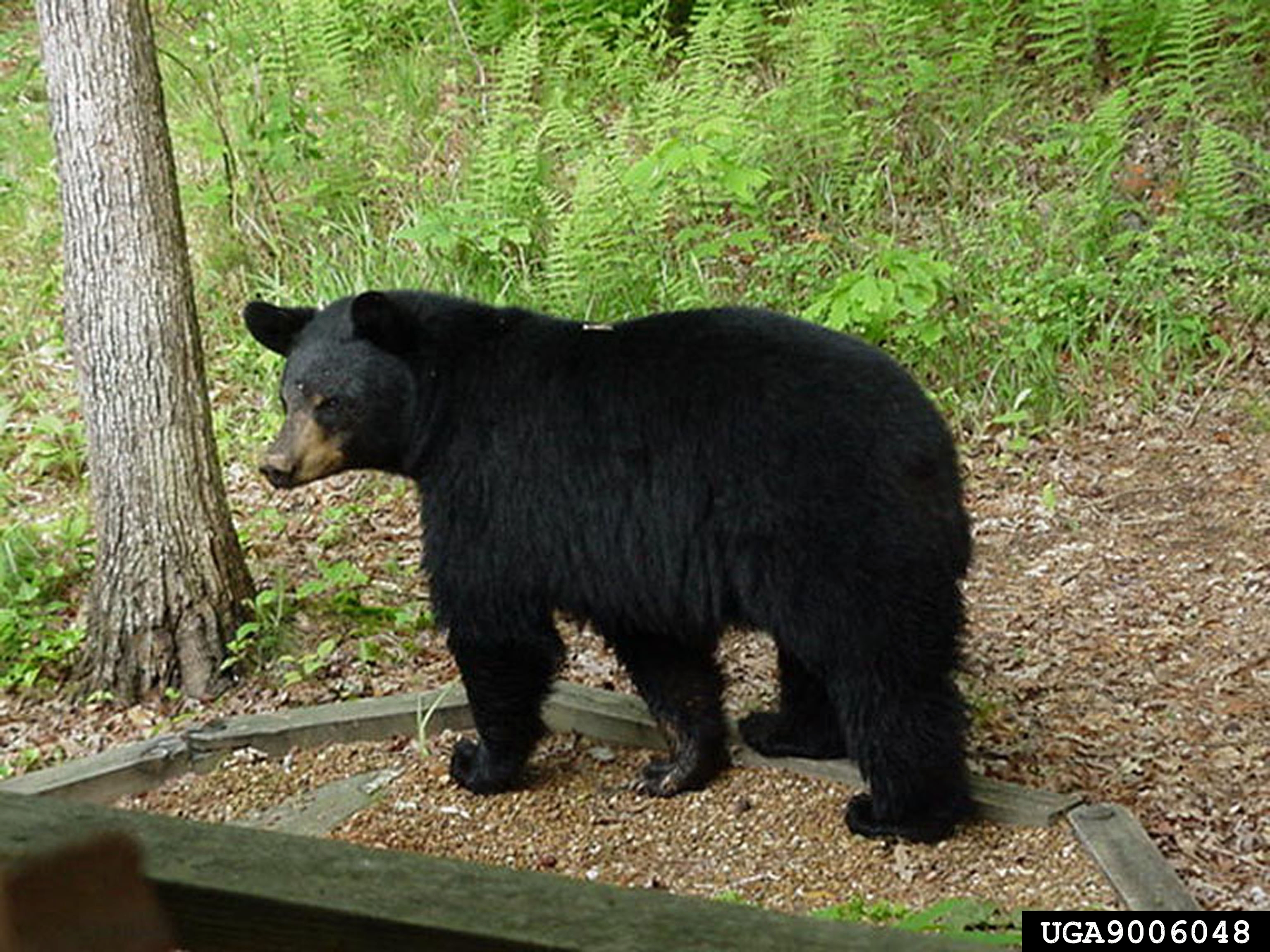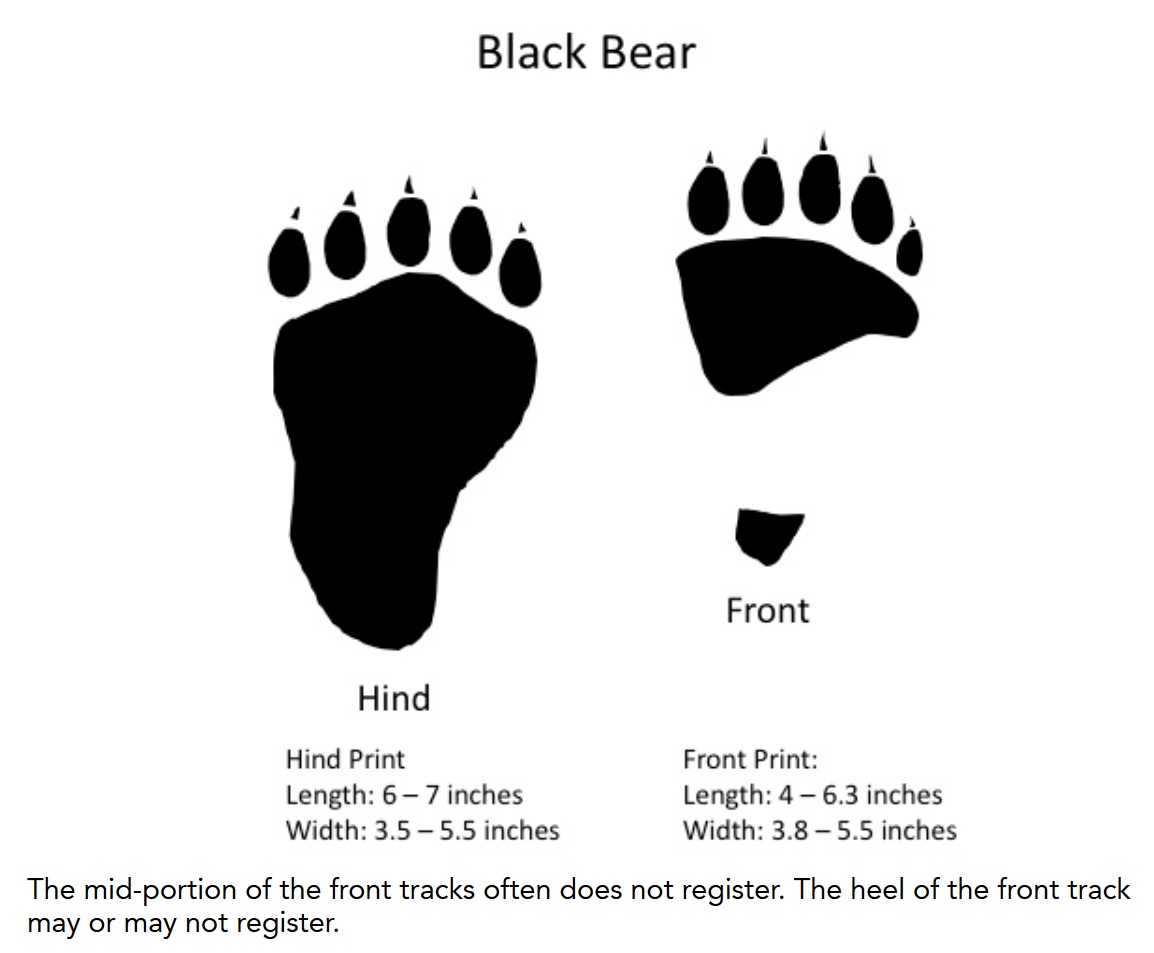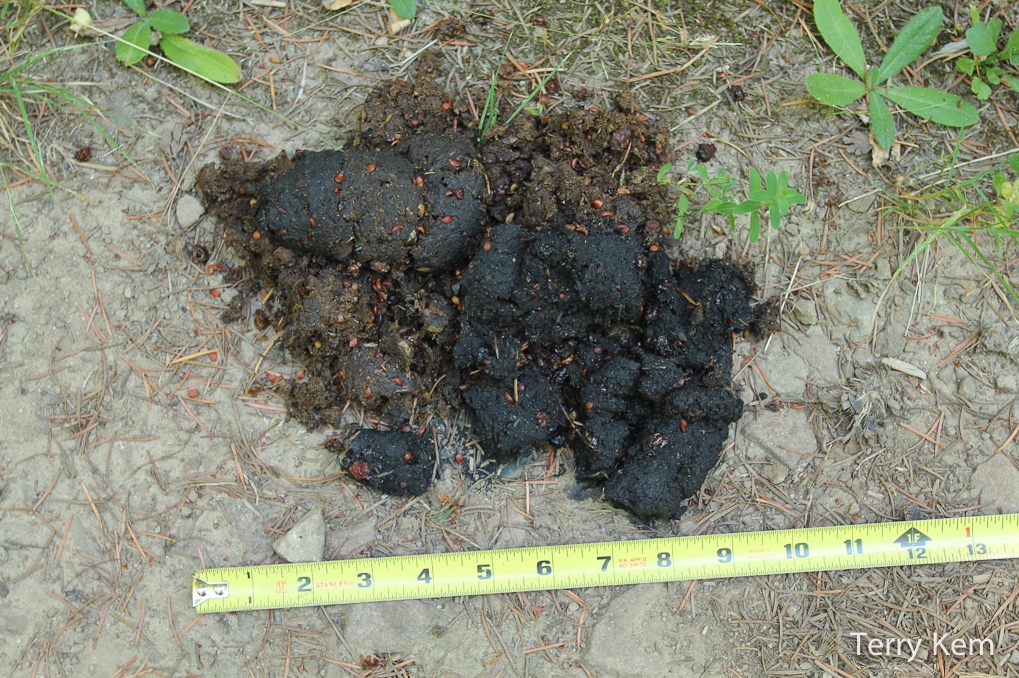 Black Bears in Town - October 23, 2019 Jeff Schalau, Agent, Agriculture & Natural Resources University of Arizona Cooperative Extension, Yavapai County Our droughty summer has brought black bears into cities and towns looking for food and water. Recent black bear sightings in Prescott Valley remind us that these large mammals are local residents and we can expect to see them periodically in our neighborhoods. Many Yavapai County residents live on the edge of town in the zone referred to as the wildland urban interface (also known as the WUI). In Arizona, WUI areas are known for having a higher risk of wildfire and greater incidences of wildlife interactions. The black bear (Ursus americanus) is the only bear species still found in Arizona. The last grizzly bear in Arizona was killed in 1935 near Nutrioso. The black bear is the smallest and most widely distributed North American bear. In Arizona, it lives primarily in forest, woodland and chaparral habitats but can sometimes be found in and near desert riparian areas. Arizona’s black bears generally have a home range between 7 to 15 square miles. Black bears are not always black in color with other color phases being brown, cinnamon, and dark blond. Black bears have a short but conspicuous tail. Adult males are larger than females with typical adult weights ranging from 125 to 400 pounds. Adult black bears average about 3 to 3 ½ feet tall when on all four feet and are between 4 ½ to 6 ¼ feet long. When standing on their hind legs, they are often 6 feet tall. Black bear cubs are born during January in winter dens, usually in pairs, but larger litters are not uncommon. The cubs are very small (eight ounces) and helpless at birth. Cubs emerge from the den in April and stay with their mother through the first summer and fall, denning with her their second winter. Female black bears in Arizona usually reach reproductive age in their fourth year, and usually breed every other year. Black bears are relatively long lived animals, with some individuals exceeding 20 years of age. Black bears are most active at dawn and dusk but may be seen at other times of day. They are normally solitary animals, except for family groups (mother and cubs), breeding pairs, and congregations at feeding sites. Their diet consists primarily of grasses and forbs in spring, soft mast (acorns and other tree fruits) in summer, and a mixture of hard and soft mast in fall. Only a small portion of the diet of bears consists of animal matter, and then primarily in the form of colonial insects (bees and termites), caterpillars, and beetles. Most vertebrates are consumed in the form of carrion. Black bears are not active predators and feed on live vertebrates only if the opportunity exists. Bearing (no pun intended) fruit orchards can also attract black bears. Signs of activity include large tracks with claw marks (the hind print is somewhat like a human’s footprint), somewhat round droppings, digging, large overturned rocks and logs, and garbage from dumpsters or cans scattered good distances away from the source. Threatened or stressed adults will make sounds, including woofing, hissing, popping of teeth and grunting. If and when a black bear is encountered in the wild, leave it alone, make noise to alert the bear to your presence, watch it from a distance, keep your dog(s) under control, back away slowly and/or give it space and let it pass. Wild bears should rely on natural foods. Human-fed bears will abandon natural food sources in preference of human foods and garbage. Therefore, never allow bears to obtain human food, pet/livestock feeds, or garbage. Bears that receive these "food rewards" may become aggressive towards humans or cause property damage. To protect people and property, these bears may have to be euthanized. Hence the saying “a fed bear is a dead bear”. People that feed wildlife should understand that this harms rather than helps local wildlife. Feeding wildlife is also illegal with the exception of birds and tree squirrels. If a black bear or other large predator is seen in an urban or suburban area, it is best to report it to the Arizona Game and Fish Department or local Animal Control Officers. See below for additional information and photos. You can follow the Backyard Gardener on Twitter – use the link on the BYG website. If you have other gardening questions, call or email the Master Gardener help line in the Prescott (928-445-6590/prescottmg@gmail.com) or Camp Verde (928-554-8992/verdevalleymg@gmail.com) and be sure to include your name, address and phone number. Find past Backyard Gardener columns or provide feedback at the Backyard Gardener web site: http://cals.arizona.edu/yavapai/anr/hort/byg/. Photos  Black bear (Ursus americanus, Steve Pfiffer, Coldwell Banker, Bugwood.org).
Black bear (Ursus americanus, Steve Pfiffer, Coldwell Banker, Bugwood.org). Black bear tracks (www.wildlifeillinois.org).
Black bear tracks (www.wildlifeillinois.org). Black bear scat (Terry Kem, www.wildlifeillinois.org).
Black bear scat (Terry Kem, www.wildlifeillinois.org).Additional Resources Black Bear, Arizona Game and Fish Dept www.azgfd.com/hunting/species/biggame/blackbear/ Black Bears and Hibernation, Utah State University Extension extension.usu.edu/wildlife-interactions/featured-animals/black-bears Quick Black Bear Facts, North American Bear Center bear.org/quick-black-bear-facts/ |